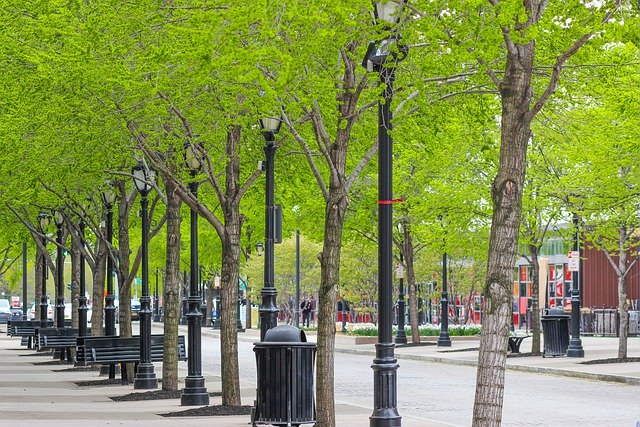 Trees are an important part of our environment. They come in various shapes and sizes, providing shade, oxygen, flowers, and fruits. But, did you know that trees can also absorb noise!?
Trees are an important part of our environment. They come in various shapes and sizes, providing shade, oxygen, flowers, and fruits. But, did you know that trees can also absorb noise!?
Scientists have recently conducted studies to find the best tree for absorbing noise -- and the winner is larch, a type of conifer.
Conifers are trees with needle-shaped evergreen leaves and cones and are better at absorbing noise than broadleaved trees. They typically don’t lose their leaves or change colors with the seasons. However, larch is a deciduous conifer, which means that it sheds its leaves in the winter and changes color in the fall.
Science of Noise Control
The reduction of sound intensity is called “sound attenuation." Usually, sound waves travel through the air until they dissipate.
 So, how do trees reduce noise? They reflect, mask, and absorb sound. Sound scatters in different directions by bouncing off leaves, branches, trunks, and the ground near a tree. Broadleaved trees are good at reflecting sound because their large leaves provide more surface area for sound waves to bounce off.
So, how do trees reduce noise? They reflect, mask, and absorb sound. Sound scatters in different directions by bouncing off leaves, branches, trunks, and the ground near a tree. Broadleaved trees are good at reflecting sound because their large leaves provide more surface area for sound waves to bounce off.
When a tree’s leaves rustle or a twig breaks, it creates little noises that can cover up noise pollution slightly. This is called “masking the sound.” Tree bark and the soft ground can also absorb sound. When a sound wave hits these surfaces, some of the kinetic energy changes into a little bit of heat, which causes the sound wave to decay faster and reduces noise.
Usually, trees are planted in tree belts -- dense groups of trees that form a noise barrier. Just a ten-meter wide strip of trees can reduce traffic noises by as much as five decibels.
Why Conifers?
A big difference between conifers and broadleaved trees is their bark. The three main factors that influence how well a tree absorbs noise are bark thickness, tree age, and bark roughness. Rougher barks are better at absorbing sound.
In a recent study, scientists tested 13 different species of trees to find the one best at absorbing noise. They used trees that are commonly found in urban places, such as cherry, pine, willow, and poplar. Both coniferous and broadleaved trees were included in the study.
The scientists found that conifers were better at absorbing noise than broadleaved trees were, due to their slightly more absorbent barks. Specifically, the larch was the best.
Landscapers in cities may start incorporating conifers into their designs to create spaces where there is no urban noise pollution. Although there is still a lot more to learn about why and how trees absorb sound, this recent discovery is sure to change urban landscaping!
Sources: BBC, TheSpruce, Britannica, ambius.com, trees.org.uk, build.com.au










